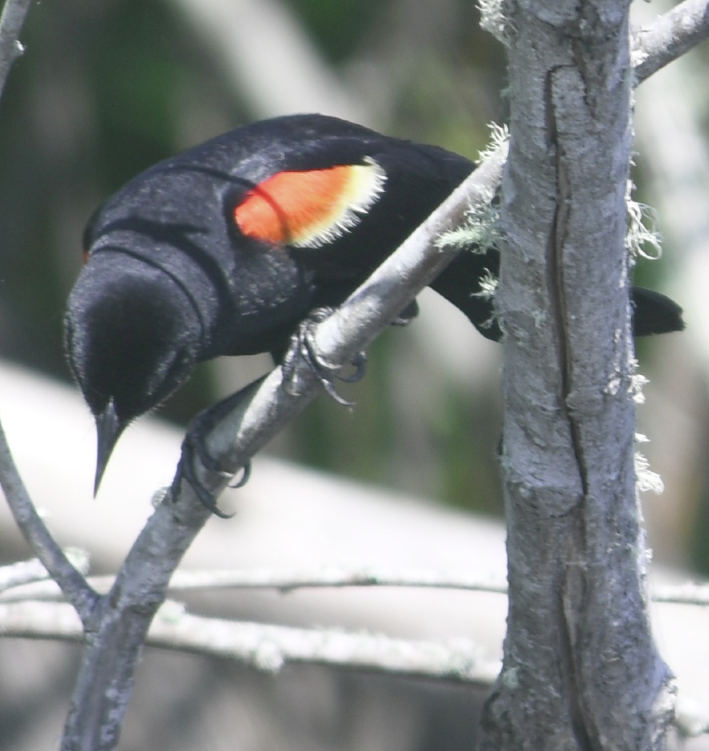Les Harrison
Contributor
Common names, as the term implies, is a means used by the general public for identifying any number of tangible items and abstract concepts. This nomenclature usually identifies a distinctive feature obvious to the observer.
In the world of consumer products, this is a critical feature of marketing. It is imperative for the seller to distinguish their product from the crowd of similar offerings.
Common names are also used to identify many of the plants and animals, both native and exotic, in Jefferson County. This informal terminology is much simpler to employ than the rigorous (and often difficult to pronounce) scientific names, but the common name are sometimes used for multiple species.
One species with the good luck to be distinct and unlikely to be confused with any other bird is the red-winged blackbird. Agelaius phoeniceus, as it is scientifically identified, is a native to much of North and Central America.
As its common name implies, the males have an easily viewed bright red bar of feathers on each shoulder with a thin yellow stripe running parallel just below the red. Females are a dark brown, without any of the male’s overt and showy traits but do have distinguishing marks for those who studiously observe these birds.
The red feathers are produced from carotenoids in this bird’s diet. When in captivity with a diet change, the red plumage turns to brown.
Local blackbirds (also known as grackles), while in the same family as red-winged blackbirds, are not in the same genus or closely related. The general appearance of both birds is responsible for the similarity in common names.
Many of the red-winged blackbirds in North Florida are considered full time residents, but there are populations which migrate from colder regions of Canada and the U.S. The migration begins sometime in the late summer to the early autumn, depending on environmental conditions.
This species is considered one of the many songbirds which inhabit the area. They are easily viewed in grassy areas with ponds, rivers or swamps nearby.
During nesting season there seems to be a preference for swampy areas, but it is not absolute. The site selection may be as simple as safety from predators and a good source of food.
Animals which will raid the nest for eggs and hatchlings include snakes, raccoons and other birds. These birds usually nest in groups and the males share sentry duty to warn of potential problems.
The wetlands usually offer a continuous and varied supply of food for any avian species present, including this one. Insects, spiders, worms, small amphibians and a variety of seed are all on the menu.
In general, the wild seed consumption of this bird is of little concern to most people, but cereal crops like corn are a different story. Flocks of the gregarious bird will congregate in fields and consume large volumes of grains.
If they are left unmolested in an area for several days, they become established and difficult to repel. While there is corn and other grain acreage in many North Florida counties, any loss is a concern to the grower.
The plentiful wild resources easily create and support a good great environment for this distinctive songbird. Even with the minor potential for economic damage to agricultural crops, it is a win-win for all involved.
To learn more about this distinctive songbird, contact the nearest UF/IFAS County Extension Office or visit https://sfyl.ifas.ufl.edu/find-your-local-office/. To read more stories by Les Harrison, visit Outdoorauthor.com and follow him on Facebook.

